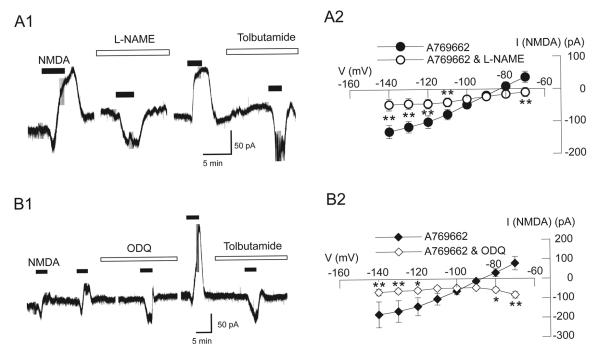Fig. 7.
Augmentation of the NMDA-activated K-ATP conductance by AMPK requires NO and cGMP. All recordings were made with pipettes that contained A769662 (5 μM). (A1) Current trace shows that bath application of the NOS inhibitor L-NAME (200 μM) blocked NMDA-evoked outward current (at –70 mV). Note that only inward current was evoked by NMDA in the presence of L-NAME. (A2) Summarized I-V plots show that L-NAME (200 μM) significantly altered the voltage-dependence of currents evoked by NMDA (n = 6). (B1) Current trace shows that the guanylyl cyclase inhibitor ODQ (20 μM) blocked NMDA-evoked outward current (at –70 mV) in an STN neuron. Note that NMDA evoked an inward current in the presence of ODQ, whereas NMDA evoked outward current after ODQ was washed from the slice. (B2) Summarized I-V plots show that ODQ (20 μM) significantly altered the voltage-dependence of currents evoked by NMDA and changed the slope conductance of NMDA-evoked currents from positive to negative (n = 7). Asterisks: *, P < 0.05; **, P < 0.01.

